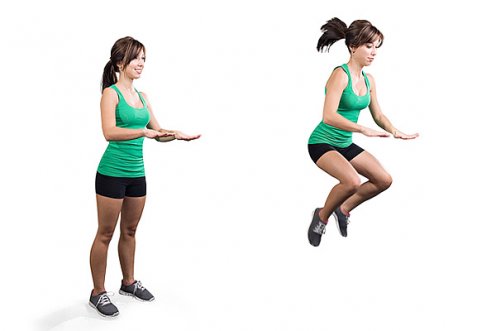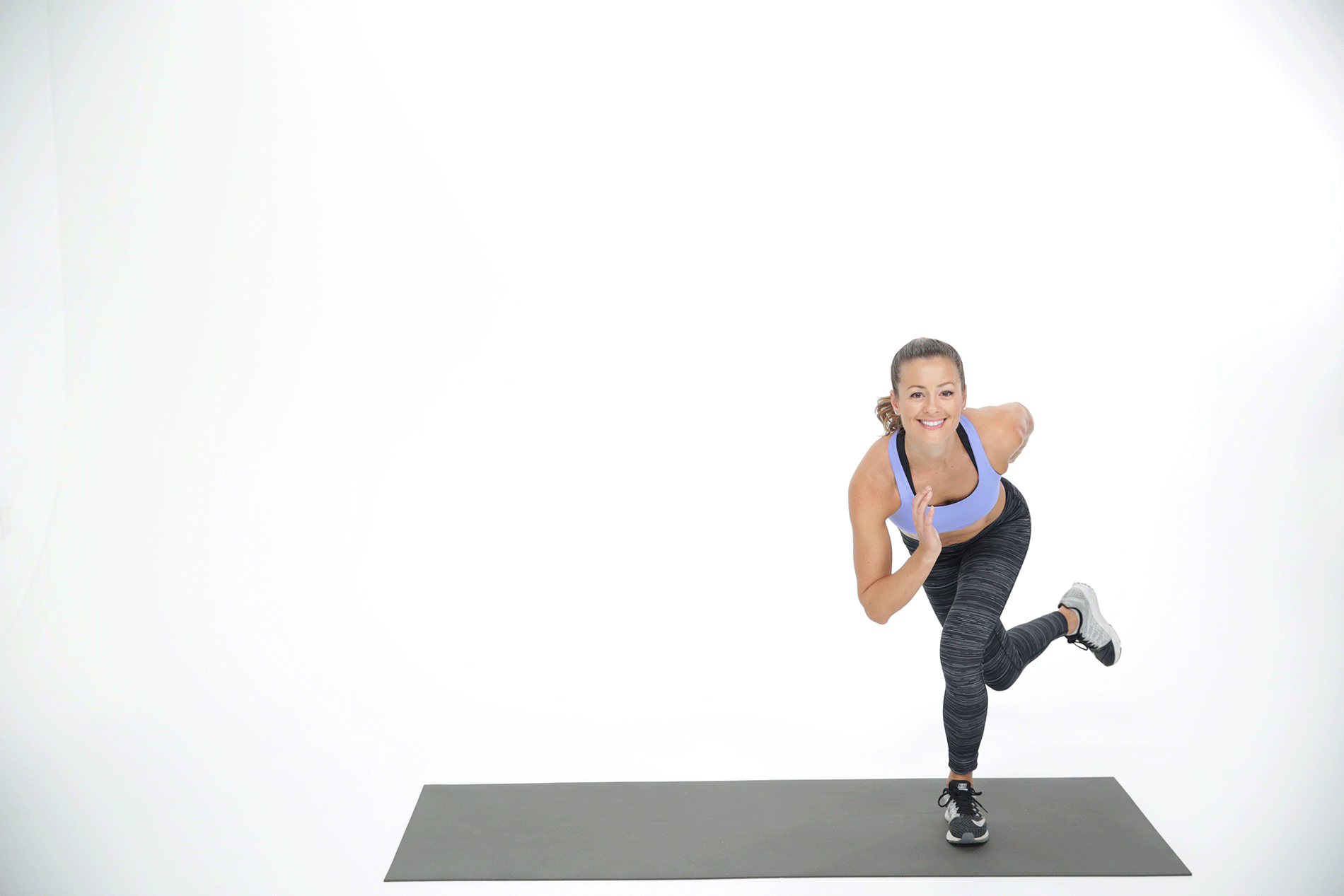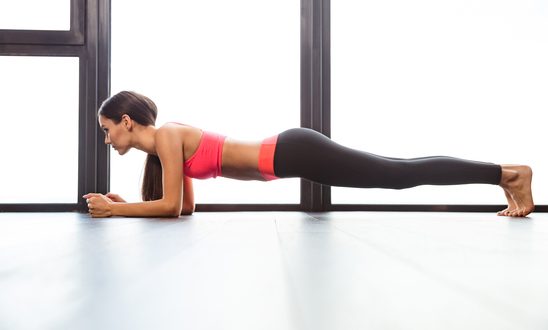What is HIIT?
HIIT (high-intensity interval training) is a type of interval training that consists of brief bursts of super-intense activity separated by periods of rest or lower intensity exercise. It is possibly the most time-efficient method of exercise.
It takes your cardio workout to the next level by pushing your pace beyond your comfort zone.
Any form of aerobic exercise, like running, stair climbing, rowing, or jumping rope, can be combined with HIIT.
That method might save you time since you won’t have to work out as long as you would if you maintained a consistent pace.
You will lose weight, gain muscle, and have a faster metabolism. Plus, your body will burn calories for roughly 2 hours after you exercise.

Six Benefits of HIIT
HIIT can help you burn a lot of calories in a short period of time.
HIIT (high-intensity interval training) allows you to burn calories rapidly.
In one study, the calories burned during 30 minutes of HIIT, weight training, running, and biking were compared.
Researchers discovered that HIIT burns 25–30% more calories than other types of exercise.
A HIIT repeat in this study comprised of 20 seconds of peak effort followed by 40 seconds of recovery.
HIIT exercises frequently last far less time than regular exercise sessions, despite the fact that each one in this research lasted 30 minutes.
This is so that you can exercise for a shorter period of time while still burning roughly the same number of calories.
Hours after HIIT activity, your metabolic rate is greater.
After your workout is over, HIIT truly assists you in burning calories.
Numerous studies have shown that HIIT is remarkably effective in raising your metabolic rate for hours after exercise.
Even more than running or weight training, several researchers have shown that HIIT enhances your metabolism after exercise.
The same study discovered that HIIT might change the body’s metabolism so that fat instead of carbohydrates is used as fuel.
You can lose weight using HIIT.
HIIT can help you reduce weight, according to studies.
25 studies and 578 people who were overweight or obese were examined in one review.
Interesting results showed that both moderate-intensity exercise and classic HIIT can lower body fat and waist circumference.
Even though HIIT only requires a little time commitment, a number of other studies have found that it helps decrease body fat.
Like other types of exercise, HIIT may, however, be most helpful for fat reduction in those who are overweight or obese.
HIIT may help you gain muscle.
HIIT may assist some people gain more muscle mass in addition to aiding in fat reduction.
The muscles that are utilized the most, often those in the trunk and legs, are where the majority of the muscle mass increase occurs.
In addition, people who were less active to begin with have a higher chance of experiencing gains in muscle mass.
Some studies in active individuals have been unable to demonstrate increased muscle mass after HIIT regimens.

Although high intensity interval training may only promote a limited amount of muscle growth, weight training remains the best method of exercise for building muscle mass.
HIIT can lower blood pressure and heart rate.
HIIT could also provide significant health advantages.
Numerous studies suggest that it can lower heart rate and blood pressure in overweight and obese individuals, demographics where high blood pressure is widespread.
According to one research, persons with high blood pressure might lower their blood pressure as much as typical, continuous endurance training after 8 weeks of HIIT on a stationary bike.
In this study, the HIIT group exercised just three times per week for 20 minutes per day, whereas the endurance training group trained four days per week for 30 minutes per day.
HIIT may potentially lower blood pressure more than the usually advised moderate-intensity exercise, according to some studies.
HIIT may lower blood sugar.
Blood sugar levels can be lowered by HIIT regimens lasting fewer than 12 weeks.
HIIT (high-intensity interval training)decreases insulin resistance more than regular continuous exercise, according to a review of 50 research, and lowers blood sugar levels as well.
According to this findings, high intensity exercise could be especially advantageous for people who are at risk for type 2 diabetes.
In fact, studies conducted particularly on individuals with type 2 diabetes have shown that HIIT is helpful at lowering blood sugar.
However, studies on healthy individuals suggest that HIIT may be even more effective than regular continuous exercise at reducing insulin resistance.
Both Anaerobic And Aerobic Performance Are Improved by HIIT.
Along with enhancing anaerobic and aerobic workout performance, HIIT provides significant health advantages.
HIIT training, whether you’re an athlete, weekend warrior, or just want to run about with your kids, will improve your performance during these activities with just a few fast sessions each week.
Reasons You Shouldn’t Perform HIIT at Every Exercise
This formula for an intensive workout is so well-liked that it has been used as a shorthand for pretty much every style of upscale fitness class that includes several exercises, various stations, and lots of perspiration. Many people who have taken HIIT classes may not fully comprehend why they are exerting so much effort via the stop-and-start nature of the protocol because the word is used so frequently.
Despite this, HIIT workouts are a popular choice for boutique gyms and fitness clubs because they pack a lot of activity into a short amount of time, which is perfect for clients looking to get the most bang for their buck and for trainers and gyms looking to pack as many sessions into a schedule as possible.

If your whole exercise regimen consists on HIIT training sessions, you need to take a step back and reevaluate what you’re doing. That’s OK for gyms with class spaces to plan. Want to gain muscle? Although HIIT might be a fantastic tool for training variety, you won’t be able to maximize your results that way. And you’re exercising too much if you perform more than two or three HIIT sessions each week. If you push yourself as hard as you should during every session, you risk overtraining or failing to attain the intensity level that the exercises are intended for since you won’t have enough time to recuperate.
How frequently should I perform HIIT exercises per week?
Depending on fitness level and intended outcome, the majority of HIIT training regimens are designed around 2-4 times per week.
Don’t discount the value of rest days just because they are brief, and be alert for your body’s signals that it needs a break:
- Having trouble waking up
- Irritability
- Low motivation Lack of focus Increased levels of stress
- unable to get to sleep or remain asleep
What HIIT workouts work the best?
As you’ve seen, the majority of HIIT exercises include heart-pumping movements like jump squats, burpees, commandos, planks, mountain climbers, and tuck jumps. These HIIT cardio exercises often consist of short bursts of 20 to 40 seconds of activity; you take a rest, and then the cycle repeats again.
Should I take my health condition into account?
Managing health issues such as diabetes, hypertension, hypercholesterolemia, or heart disease involves maintaining and improving physical fitness. Furthermore, HIIT is an excellent method for improving your general health and losing weight.
You should see your doctor to determine whether HIIT is suitable for you as this exercise puts a lot of strain on your heart. For a little amount of time, you should begin gradually by doing a few intervals.
Any joint or muscle issues, such as arthritis, may prevent you from performing HIIT. First, consult your physician.
You should speak with your doctor before beginning HITT if you are pregnant, have completed it before becoming pregnant, and have no other health concerns.
Your expanding tummy will make it difficult for you to be active during the second and third trimesters. A doctor’s clearance is required before engaging in high-impact exercise. Don’t overheat, and be sure you drink lots of water.
Summary
Exercise that burns more calories than other types of exercise is called high-intensity interval training. It’s a very effective type of exercise.
An increased metabolism, which persists for hours after exercise, accounts for a portion of the calories burned during high-intensity periods.
All things considered, HIIT results in many of the same health advantages as other types of exercise but does so faster.
Blood pressure, heart rate, and body fat all drop as a result of these advantages. Moreover, HIIT may enhance insulin sensitivity and reduce blood sugar.



5 thoughts on “HIIT: Why It Is Much Important To Our Health”